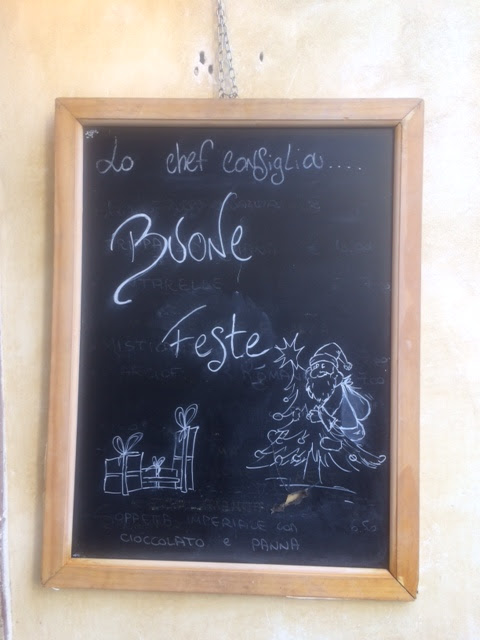 |
| Aunt Ger with formaggio |
The next morning (December 22, are you confused yet?), Conor arrived and we walked over to the Vatican to check out the tree and creche outside San Pietro.
Finally, that evening, Lily arrived!
It's been hard to take many pictures or post with all the comings and goings, but we visited the Vatican museum on December 23. It is a totally wild place.
And we had new friends over for a little cocktail party at the house to meet the kids and Ger that evening. Rose and Wayne (Seattlelites who introduced us to Caravita), Steve and Luisa (who we met there), and Gail and Louie (who we met through an expat group).
We rested most of Christmas eve, then went to evening Mass at Caravita.
We had dinner afterwards with Wayne and Rose and also Steve and Luisa, who were both headed to All Saints Anglican church to play the organ and solo, respectively, for midnight Mass there. The dinner was excellent, especially Wayne's octopus and potato, fish being traditional in Italy for Christmas Eve.
Christmas morning, the still very jet-lagged visitors, got up late and then we opened presents.
Then went to Christmas lunch (what else?)...
 | |
|
 |
| Bacala on toasts and artichoke flan ... |
That night, we walked through Piazza Navona.
 |
| Christmas market and carousel at Piazza Navona |
Today, December 27, we took a private tour (with Context Tours) that focused on the Risorgimento, the movement that ultimately lead to 1870's final unification of Italy and establishment of a democratic government. Many thanks to our excellent guide, Richard, who is here reading from the 1848 Constitution engraved on the wall in the background that looks over Rome from the Janiculum hill.
One last shot (no pun intended): a "Pio Nono," the name given to the cannon balls rained down on the republicans by French troops defending Rome and Pope Pius IX (Pio Nono in Italian) on a plaque outside a church at the top of the hill.




































